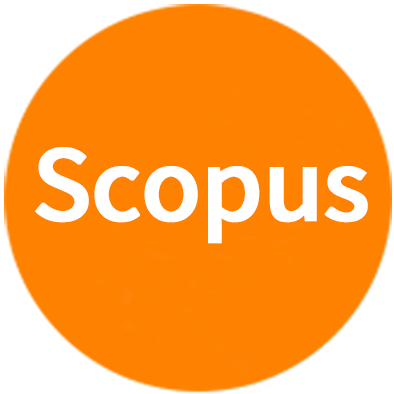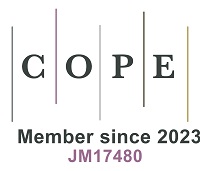REFERENCES
1. Crippa, M.; Solazzo, E.; Guizzardi, D.; Monforti-Ferrario, F.; Tubiello, F. N.; Leip, A. Food systems are responsible for a third of global anthropogenic GHG emissions. Nat. Food. 2021, 2, 198-209.
2. Rojas-Downing, M. M.; Nejadhashemi, A. P.; Harrigan, T.; Woznicki, S. A. Climate change and livestock: impacts, adaptation, and mitigation. Clim. Risk. Manag. 2017, 16, 145-63.
3. Ghasempour, A.; Ahmadi, E. Assessment of environment impacts of egg production chain using life cycle assessment. J. Environ. Manag. 2016, 183, 980-7.
4. Gerber, P. J.; Steinfeld, H.; Henderson, B.; et al. Tackling climate change through livestock: a global assessment of emissions and mitigation opportunities. Food and Agriculture Organization of the United Nations (FAO); 2013. Available from: https://www.fao.org/4/i3437e/i3437e00.htm [Last accessed on 25 Apr 2025].
5. Grassauer, F.; Arulnathan, V.; Pelletier, N. Towards a net-zero greenhouse gas emission egg industry: a review of relevant mitigation technologies and strategies, current emission reduction potential, and future research needs. Renew. Sustain. Energy. Rev. 2023, 181, 113322.
7. Liu, Y.; Tao, W. Recent China's egg market situation and its future prospect. Agric. Outlook. 2019, 15, 8-13.
8. Li, Q.; Long, R.; Chen, H. Empirical study of the willingness of consumers to purchase low-carbon products by considering carbon labels: a case study. J. Clean. Prod. 2017, 161, 1237-50.
9. Upham, P.; Dendler, L.; Bleda, M. Carbon labelling of grocery products: public perceptions and potential emissions reductions. J. Clean. Prod. 2011, 19, 348-55.
10. Elofsson, K.; Bengtsson, N.; Matsdotter, E.; Arntyr, J. The impact of climate information on milk demand: evidence from a field experiment. Food. Policy. 2016, 58, 14-23.
11. Hartikainen, H.; Roininen, T.; Katajajuuri, J. M.; Pulkkinen, H. Finnish consumer perceptions of carbon footprints and carbon labelling of food products. J. Clean. Prod. 2014, 73, 285-93.
12. Holenweger, G.; Stöckli, S.; Brügger, A. Carbon footprint labels involving traffic lights foster sustainable food choices. Food. Qual. Prefer. 2023, 106, 104813.
13. Liu, C.; Xiong, K.; Chen, X.; Huang, X. Consumer behavior patterns of carbon neutral label using the unified theory of acceptance and use of technology. Chin. J. Popul. Resour. Environ. 2023, 21, 137-44.
14. Zhao, R.; Geng, Y.; Liu, Y.; Tao, X.; Xue, B. Consumers’ perception, purchase intention, and willingness to pay for carbon-labeled products: a case study of Chengdu in China. J. Clean. Prod. 2018, 171, 1664-71.
15. Edenbrandt, A. K.; Asioli, D.; Nordström, J. Impact of different carbon labels on consumer inference. J. Clean. Prod. 2025, 494, 145020.
16. Xu, M.; Lin, B. Towards low-carbon economy by carbon label?: survey evidence from first-tier cities in China. Environ. Impact. Assess. Rev. 2022, 97, 106902.
17. Rondoni, A.; Grasso, S. Consumers behaviour towards carbon footprint labels on food: a review of the literature and discussion of industry implications. J. Clean. Prod. 2021, 301, 127031.
18. Broeckhoven, I.; Verbeke, W.; Tur-Cardona, J.; Speelman, S.; Hung, Y. Consumer valuation of carbon labeled protein-enriched burgers in European older adults. Food. Qual. Prefer. 2021, 89, 104114.
19. Canavari, M.; Coderoni, S. Consumer stated preferences for dairy products with carbon footprint labels in Italy. Agric. Econ. 2020, 8, 149.
20. Wong, E. Y. C.; Chan, F. F. Y.; So, S. Consumer perceptions on product carbon footprints and carbon labels of beverage merchandise in Hong Kong. J. Clean. Prod. 2020, 242, 118404.
21. Mostafa, M. M. Egyptian consumers' willingness to pay for carbon-labeled products: a contingent valuation analysis of socio-economic factors. J. Clean. Prod. 2016, 135, 821-8.
22. Zhao, R.; Yang, M.; Liu, J.; Yang, L.; Bao, Z.; Ren, X. University students’ purchase intention and willingness to pay for carbon-labeled food products: a purchase decision-making experiment. Int. J. Environ. Res. Public. Health. 2020, 17, 7026.
23. Loo EJ, Caputo V, Nayga RM, Verbeke W. Consumers’ valuation of sustainability labels on meat. Food. Policy. 2014, 49, 137-50.
24. Chen, Y. S.; Chang, C. H. Enhance green purchase intentions: the roles of green perceived value, green perceived risk, and green trust. Manag. Decis. 2012, 50, 502-20.
25. Shuai, C. M.; Ding, L. P.; Zhang, Y. K.; Guo, Q.; Shuai, J. How consumers are willing to pay for low-carbon products? – Results from a carbon-labeling scenario experiment in China. J. Clean. Prod. 2014, 83, 366-73.
26. Yao, J.; Guo, X.; Wang, L.; Jiang, H. An evolutionary game and system dynamics approach for the production and consumption of carbon-labeled products-based on a media monitoring perspective. J. Environ. Manag. 2024, 360, 121154.
27. Lizin, S.; Rousseau, S.; Kessels, R.; et al. The state of the art of discrete choice experiments in food research. Food. Qual. Prefer. 2022, 102, 104678.
28. Liu, R.; Gao, Z.; Nayga Jr, R. M.; Snell, H. A.; Ma, H. Consumers’ valuation for food traceability in China: does trust matter? Food. Policy. 2019, 88, 101768.
29. Aoki, K.; Akai, K. A comparison between Spain and Japan with respect to the color, expected taste scale, and sustainability of strawberries: a choice experiment. Food. Qual. Prefer. 2023, 103, 104671.
30. Panzone, L. A.; Sniehotta, F. F.; Comber, R.; Lemke, F. The effect of traffic-light labels and time pressure on estimating kilocalories and carbon footprint of food. Appetite 2020, 155, 104794.
31. Chen, R.; Jiang, C.; Li, X.; et al. Research on Chinese consumers’ shell egg consumption preferences and the egg quality of functional eggs. Poult. Sci. 2023, 102, 103007.
32. Chiumiento, F.; Bellocci, M.; Ceci, R.; et al. A new method for determining PFASs by UHPLC-HRMS (Q-Orbitrap): application to PFAS analysis of organic and conventional eggs sold in Italy. Food. Chem. 2023, 401, 134135.
33. Garcia, J. S.; Anderson, K. E.; Guard, J. Y.; Gast, R. K.; Jones, D. R. Impact of paddock area stocking density of free-range laying hens on egg and environmental microbiology. J. Appl. Poult. Res. 2023, 32, 100338.
34. Kaewsutas, M.; Sarikaphuti, A.; Nararatwanchai, T.; Sittiprapaporn, P.; Patchanee, P. Electroencephalographic study of microalgae DHA omega-3 egg consumption on cognitive function. J. Funct. Foods. 2017, 29, 46-52.
35. Cao, Y.; Cranfield, J.; Chen, C.; Widowski, T. Heterogeneous informational and attitudinal impacts on consumer preferences for eggs from welfare enhanced cage systems. Food. Policy. 2021, 99, 101979.
36. Alkharusi, H. Categorical variables in regression analysis: a comparison of dummy and effect coding. Int. J. Educ. 2012, 4, 202.
37. Brownstone, D.; Train, K. Forecasting new product penetration with flexible substitution patterns. J. Econometrics. 1998, 89, 109-29.
39. Hanemann, W. M. Welfare evaluations in contingent valuation experiments with discrete responses. Am. J. Agric. Econ. 1984, 66, 332-41.
40. Li, J.; Peng, Y.; Ma, S. Inclusive finance and economic development in China: multidimensional connotation and empirical analysis. Econ. Res. J. 2020, 55, 37-52. Available from: https://kns.cnki.net/kcms2/article/abstract?v=RN_8baVbY4f4siLDVIccUAl34jmuqHfyaslvX-L45mKUBu32ov-Ul8YLw_hX76mMgGIvGgaHkn700c0zWRMVevEy44pOmSnVCa7YTbBxwW7qtOwmFt9-KPU1xLFJFofzv_z8uKtF4JSRaivCo6EQAC-gmcPa2drPV3xx_7dqmmzL-J_-_S6R_TLNIptsGyUuZC_Sbxi3YMsSSbjm_8PCYA==&uniplatform=NZKPT [Last accessed on 25 Apr 2025].
41. Zheng, Q.; Wen, X.; Xiu, X.; Yang, X.; Chen, Q. Can the part replace the whole? A choice experiment on organic and pesticide-free labels. Foods 2022, 11, 2564.
42. CCPIT. Introduction to product carbon labelling system 2021. Available from: https://www.ccpit.org/a/20211104/20211104vprx.html [Last accessed on 23 Apr 2025].
43. Rahmani, D.; Kallas, Z.; Pappa, M.; Gil, J. M. Are consumers’ egg preferences influenced by animal-welfare conditions and environmental impacts? Sustainability 2019, 11, 6218.
44. Żakowska-Biemans, S.; Tekień, A. Free range, organic? Polish Consumers Preferences Regarding Information on Farming System and Nutritional Enhancement of Eggs: A Discrete Choice Based Experiment. Sustainability 2017, 9, 1999.
45. Zhu, Z.; Zhang, T.; Hu, W. The accumulation and substitution effects of multi-nation certified organic and protected eco-origin food labels in China. Ecol. Econ. 2023, 203, 107625.
46. Xu, Y.; Xian, B.; Ren, Y.; Wang, Y.; Lang, L.; Wang, B. Do carbon labels increase Chinese consumers’ willingness to pay for carbon-labeled agricultural products? J. Clean. Prod. 2024, 434, 140299.
47. Krinsky, I.; Robb, A. L. On approximating the statistical properties of elasticities. Rev. Econ. Stat. 1986, 68, 715-9.
48. Xiong, H.; Hu, W.; Xu, M.; Zhan, J. Revisiting heterogenous social desirability bias in consumer willingness to pay for food carbon label: social norms and environmental concerns. Food. Policy. 2024, 128, 102690.
49. Aung, M. M.; Chang, Y. S. Traceability in a food supply chain: safety and quality perspectives. Food. Control. 2014, 39, 172-84.








